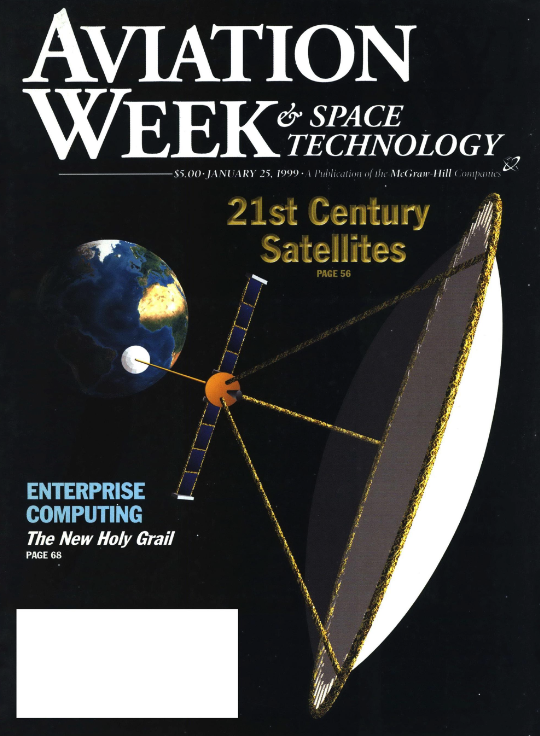From The Archives: 21st Century Satellite Technology

A recent article by Aviation Week editor Garrett Reim traced the origins of the Cubesat Revolution to 1999.
In fact, as that year began, Aviation Week published a cover story (on page 56 - Technology Leaps Shape Satellites Of Tomorrow) predicting the space industry was on the cusp of a new era of much smaller, interconnected satellites.
“The U.S. National Reconnaissance Office now operates mammoth intelligence spacecraft on the order of 15 tons, while commercial geosynchronous spacecraft have grown to five tons,” wrote space editor (and future editor-in-chief) Joe Anselmo.
But in the next two decades, he noted, “scientists are envisioning a return to Sputnik-sized spacecraft, although this time as highly sophisticated processors. Each satellite would possess massive computing power and interconnect with dozens or even hundreds of similar craft to provide blanket coverage of the Earth at all times, be it for telecommunications, intelligence monitoring or scientific observation.”
Such constellations, the article said, were being enabled by major advances in onboard processing, reconfigurable antennas, chemical propulsion, laser communications and robotics. A quarter of a century later, there are thousands of small satellites in orbit, with thousands more planned in the coming years.
Read the full article on page 56 in the Aviation Week & Space Technology issue dated Jan. 25, 1999.
Enjoy unlimited access to the complete Aviation Week Archive which has over 100 Years of Aviation Week — at your fingertips.
Every issue, every page, every article we have ever published. Your subscription includes full access to the archives, plus current Aviation Week & Space Technology articles (both digital and print packages available).




